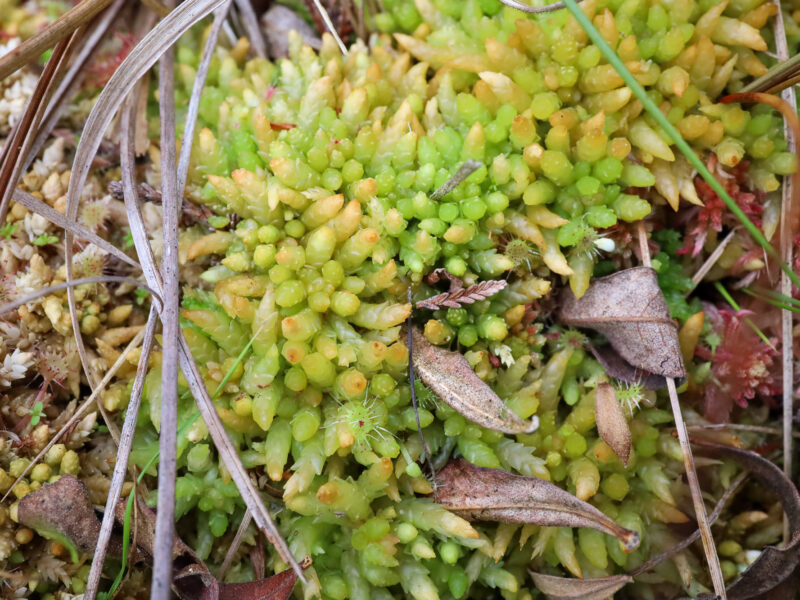Identification notes
This low-growing and often richly-coloured species is usually restricted to wet heaths where it is often found with S. tenellum and sometimes S. molle or, in the Scottish Highlands, S. strictum.
If you are in any doubt about its identity in the field, you can run through a check of characters without needing to collect it to examine under the microscope.
First, as it has concave, hooded branch leaves that resemble those of S. palustre, take a look at the stem in cross section. Do this by snapping the stem, pulling off any surrounding branches to expose the broken end, squeeze it to expel water and then look at it in cross-section with your hand-lens. Unless the pale outer part of the stem (the cortex – large, thin walled hyaline cells) is conspicuously wide in relation to the inner, darker cylinder then it cannot be any of the robust species in Section Sphagnum (including S. palustre).
Then, a more challenging task – to find the stem leaves, which in S. compactum are tiny and hang down from a stem that is very dark (often black). The problem is that the spreading branches in S. compactum normally point upwards and obscure the stem, so you’ll need to remove them to see the stem – bryologists with nails have an advantage!
Read the Field Guide account















